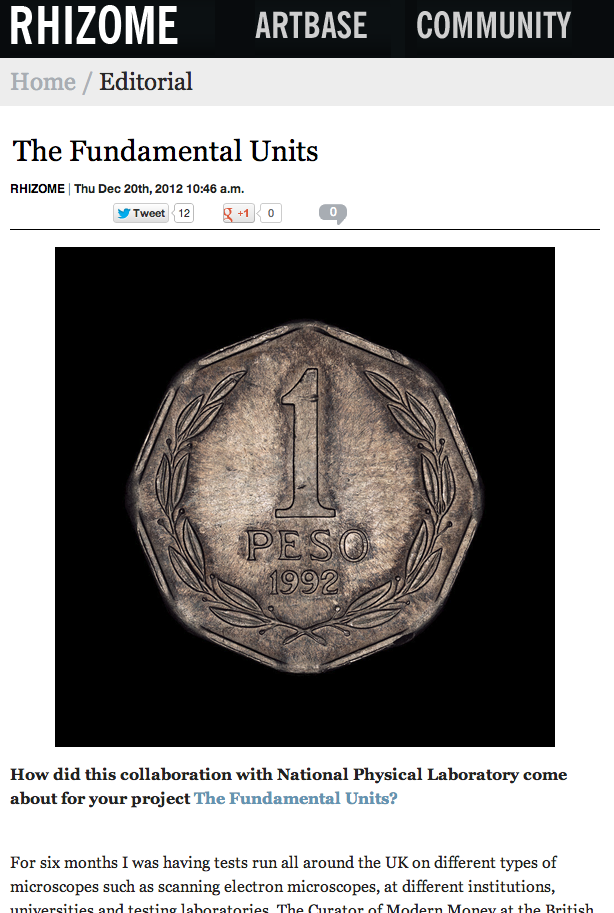How did this collaboration with National Physical Laboratory come about for your project The Fundamental Units?
For six months I was having tests run all around the UK on different types of microscopes such as scanning electron microscopes, at different institutions, universities and testing laboratories. The Curator of Modern Money at the British Museum suggested an idea which eventually lead me to the National Physical Laboratory.
I ended up at the Advanced Engineered Materials Group which is part of the National Physical Laboratory, using an Alicona infinite focus 3D optical microscope.
They were really into experimenting and pushing the equipment. It took about a month of tests to get the results we see. The process involved Petra the scientist in charge of the machine writing programs to capture the data as a whole, as the machine is designed for looking in detail at one tiny part of an object. We crashed it several times working out the right solution. Each coin, which are generally around 18-20mm in diameter, take a whole night to capture. Then computers run for three days assembling the data into extremely high resolution photographic images. We are talking files too big for normal image editing software such as Adobe Photoshop. Each photographic print is from files with around 400 million pixels.
What did some of the earlier tests look like?
Many microscopes are not optical, they don’t use light, and therefore produce results that are removed from what we generally expect to see. A scanning electron microscope, for example (attached), produces images in greyscale and the electric charge greatly emphasises dust and dirt. Clean images could be obtained though sonic cleaning and plating the coins in gold, but this started to become very removed from examining these low value tokens of exchange.

Could you explain the choice to scan these particular coins? How did you get a hold of them?
There are currently 166 active currencies using coins. Using online market places and by contacting national banks I have found the lowest donimation coin for each of these currencies. At the moment, at the beginning, we have imaged one from each continent. All 166 will be imaged.
What are you working on currently?
Well, the UCL European Institute have just (five minuets ago) awarded the research project funding to image the currencies of: Bulgaria, Croatia, Denmark, Hungary, Latvia, Lithuania, Poland, Romania Sweden, and the UK.
http://rhizome.org/editorial/2012/dec/20/martin-john-callanan
